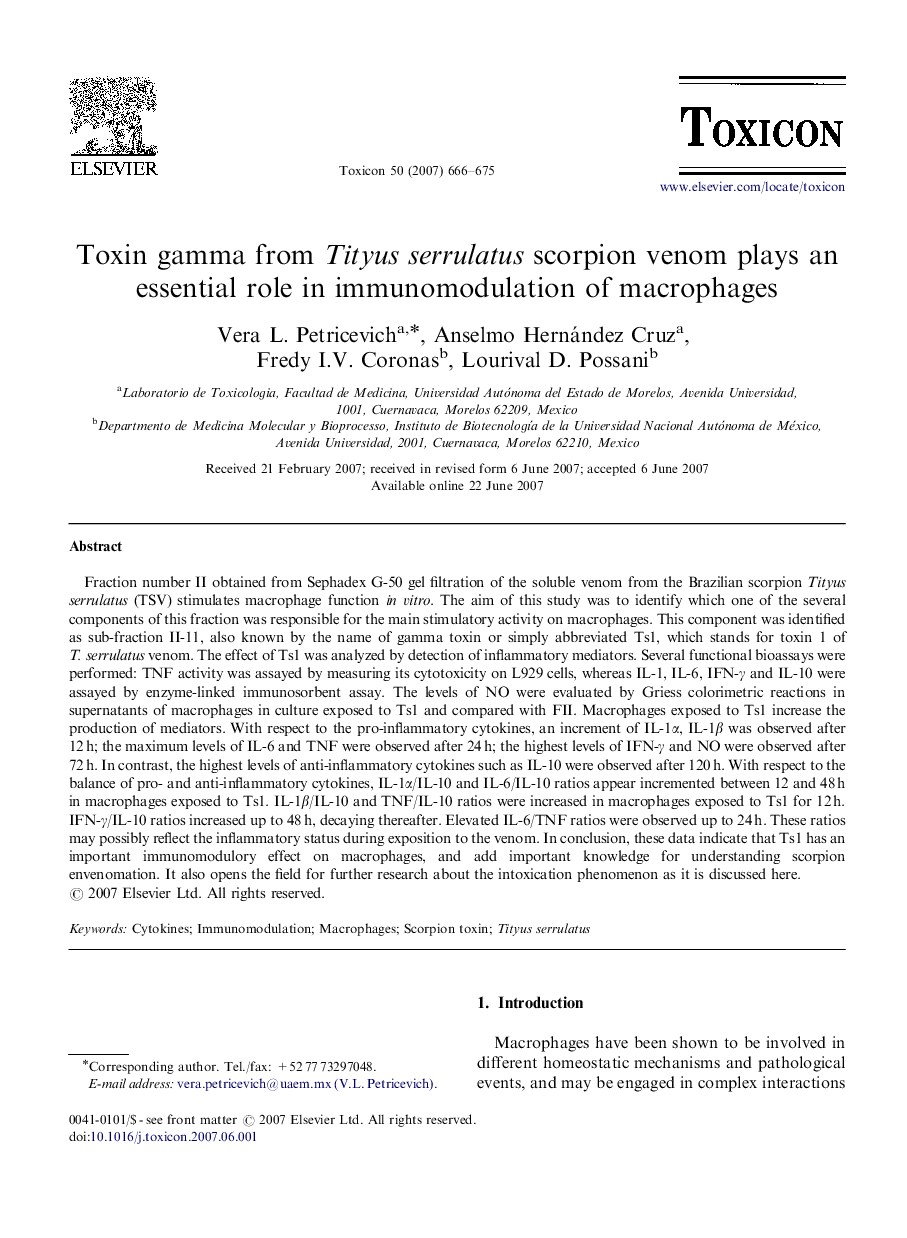| Article ID | Journal | Published Year | Pages | File Type |
|---|---|---|---|---|
| 2066804 | Toxicon | 2007 | 10 Pages |
Fraction number II obtained from Sephadex G-50 gel filtration of the soluble venom from the Brazilian scorpion Tityus serrulatus (TSV) stimulates macrophage function in vitro. The aim of this study was to identify which one of the several components of this fraction was responsible for the main stimulatory activity on macrophages. This component was identified as sub-fraction II-11, also known by the name of gamma toxin or simply abbreviated Ts1, which stands for toxin 1 of T. serrulatus venom. The effect of Ts1 was analyzed by detection of inflammatory mediators. Several functional bioassays were performed: TNF activity was assayed by measuring its cytotoxicity on L929 cells, whereas IL-1, IL-6, IFN-γ and IL-10 were assayed by enzyme-linked immunosorbent assay. The levels of NO were evaluated by Griess colorimetric reactions in supernatants of macrophages in culture exposed to Ts1 and compared with FII. Macrophages exposed to Ts1 increase the production of mediators. With respect to the pro-inflammatory cytokines, an increment of IL-1α, IL-1β was observed after 12 h; the maximum levels of IL-6 and TNF were observed after 24 h; the highest levels of IFN-γ and NO were observed after 72 h. In contrast, the highest levels of anti-inflammatory cytokines such as IL-10 were observed after 120 h. With respect to the balance of pro- and anti-inflammatory cytokines, IL-1α/IL-10 and IL-6/IL-10 ratios appear incremented between 12 and 48 h in macrophages exposed to Ts1. IL-1β/IL-10 and TNF/IL-10 ratios were increased in macrophages exposed to Ts1 for 12 h. IFN-γ/IL-10 ratios increased up to 48 h, decaying thereafter. Elevated IL-6/TNF ratios were observed up to 24 h. These ratios may possibly reflect the inflammatory status during exposition to the venom. In conclusion, these data indicate that Ts1 has an important immunomodulory effect on macrophages, and add important knowledge for understanding scorpion envenomation. It also opens the field for further research about the intoxication phenomenon as it is discussed here.
